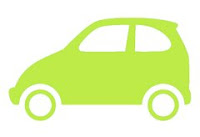• Keep it stocked: A car that is well-prepared for emergencies should carry nourishment. Be sure and always keep a few gallons of water in your car, as well as food. Choose foods that are shelf-stable and can store well in the extreme temperatures of a car.

• Be prepared to go: For your car, jumper cables, a tow chain and flares are always good things to have on board. If there are reports of a weather disaster headed your way, check the air in your tires (including the spare!) and fill up the gas tank of your car. Keep the tank at least half-filled as long as the threat remains, as the last thing you want is to run out of gas while sitting in long lines of evacuating traffic.
• Think ahead: For survival in the vehicle, you should have a flashlight and batteries, a fire extinguisher, a whistle, cash and change, vital medications, rain gear, blankets, tarps, toilet paper and any special-needs items for infants or people with disabilities. A cell phone charger that plugs into your car’s lighter outlet will also come in handy. Also be sure to include an old-school paper map, in case you evacuate to an area you aren’t familiar with and your Tom-Tom is on the fritz-fritz. Mark out emergency evacuation routes ahead of time.
Check on your car supplies every six months to make sure nothing has leaked or spoiled. (Use daylight saving time as a reminder!)
Graphic courtesy iStockphoto


